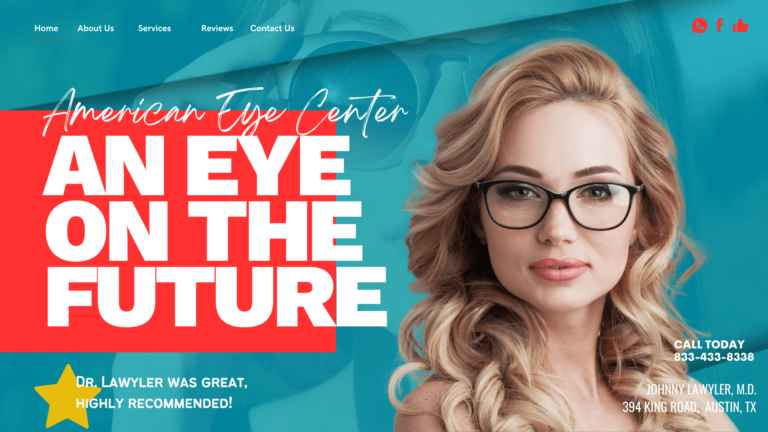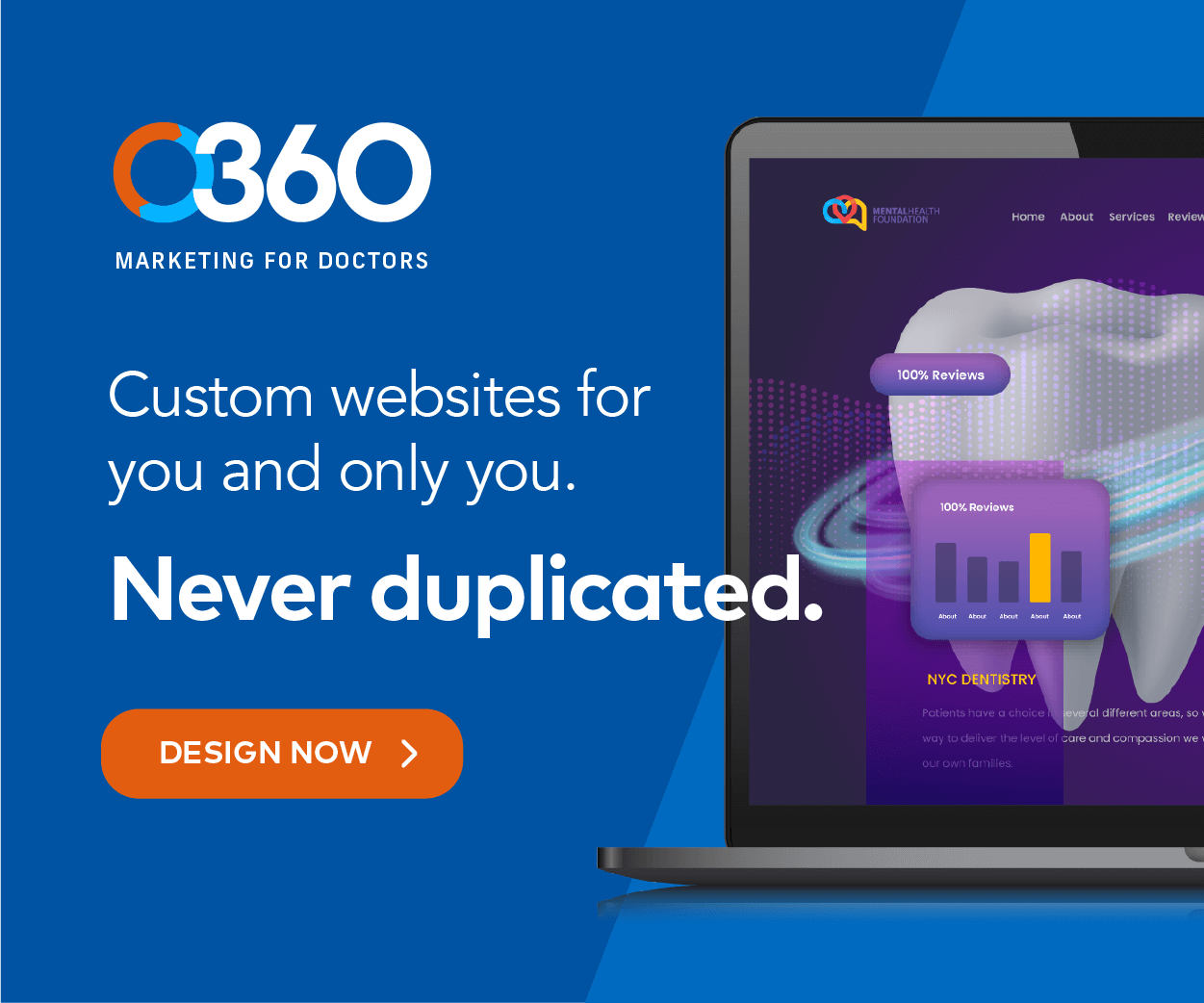
User-generated content is specifically created and published by your consumers and can include images, videos, reviews, and other testimonials. When your audience posts about your brand on social media, it’s more likely to gain traction, as user-generated content is often more influential than brand-related content. This is due to its authenticity – user-generated content harnesses its power to its full capacity, as people are likely to trust a brand or business based on word-of-mouth rather than sponsored content.
That’s because people know that businesses, to keep revenue and image afloat, will always generate content in their best light. This goes for businesses in any industry, including medical care. So, when someone on social media not affiliated with your practice posts about their experiences, people are more likely to trust your brand as a result, because that patient experienced something wonderful, the quality and assurance of care that they deserve.
User-generated content can become your biggest asset, especially if you are a new, budding medical practice working to become a staple in your community. However, user-generated content can become successful only if you know how to leverage it for your brand and connect with your audience better.
Why User-Generated Content Works For Medical Practices
People are inherently social creatures, and we place a great deal of trust in the recommendations of our peers. Trust is even more essential in the healthcare sector, where medical care is personal and often high-risk. User-generated content created by people who have no invested interest in promoting the practice by obligation is perceived as more authentic and trustworthy than traditional advertising methods.
User-generated content is also more relatable, meaning that when patients share their healthcare journeys through social media, it’s more relatable to those with similar experiences. It allows potential patients to connect and understand the stories of others and associate the medical care they need with the medical practice that the content references. Today’s internet culture is full of skepticism, so user-generated content without any attached monetary value to it helps provide a more genuine human experience that people are searching for regarding their healthcare, which speaks beyond clinical results or professional acclamations.
The Benefits of Using User-Generated Content in Your Strategy
Using user-generated content in your brand strategy can help you build a stronger, more authentic relationship with your patients. User-generated content can greatly impact your marketing experts and come with some excellent benefits. Some of these benefits include:
- Increased Loyalty and Trust: User-generated content can provide your practice with a real-world perspective on your brand, which is more trustworthy in the eyes of your potential patients. When patients can provide and share content about your brand, it can be seen as more trustworthy and credible than traditional marketing messages.
- Better Brand Recognition: This type of content can also amplify the impact of your marketing efforts, helping patients recognize your practice better. User-generated content also has the potential to expand beyond your initial target audience, connecting patients through networks, friends, followers, and other sources.
- Boosted Online Visibility and SEO: User-generated content can also enhance your practice’s online visibility. Search engines work to prioritize fresh, relevant content, and UGC is a continuous source of such content. Reviews, social media posts, and patient stories help increase the quantity and diversity of content associated with your online practice. This can improve search engine rankings and ensure that potential new patients can receive positive, authentic stories about your practice during their online research.
Refining Your Content Strategy: Generating and Leveraging UGC

Despite its benefits, user-generated content can be one of the hardest types of content to procure. Even when encouraged to do so by their practices, patients won’t always engage in creating that kind of content because it removes itself from its core power of authenticity. This form of content needs to be opted-in by choice, not coerced by brands or business objectives.
When designing campaigns and strategies to utilize user-generated content, one of the most important goals to keep in mind is giving your audience options to engage. Your campaign should build positive interactions that touch on the highlights of your industry and help reflect the community and environment that you wish to have both in person and online.
While curating UGC can be a challenge, some methods can be used to help provide both content for your practice and authentic engagement from your community. These include:
- Develop Content Campaigns For Specific Social Media Channels: Not every social media platform has the same features, so promoting a video content campaign on platforms like X (Twitter) may not work as well as other platforms designed for video content. Understanding how to use your social media channels and tailoring the content to fit the medium can help improve its impact.
- Start Trends, Challenges, or Contests: Some campaigns that include challenges, contests, and trends can be the best source of inspiration your patients need to share their experiences. If your practice covers specific health topics, especially ones that affect the livelihoods of others, then campaigns that promote the importance of these topics in an engaging way can help enhance your community’s engagement with your practice.
- Create Hashtags and Encourage Their Use: Some of the best engagement resources come from hashtags. Hashtags provide a way to trend and track your marketing campaign. This makes it easier to find and share UGC and helps build a community around your practice as patients see their stories alongside others.
- Highlight UGC in Patient Communications: Feature UGC in your newsletters, email communications, and other patient outreach efforts. Sharing real stories and feedback demonstrates your commitment to patient satisfaction and can inspire loyalty and referrals.
- Create A Dedicated UGC Section On Your Website: Develop a specific area of your website dedicated to showcasing patient stories, reviews, and testimonials. This leverages UGC to build credibility and provides a central hub where potential patients can hear directly from others about their experiences with your practice.
How to Measure the Success of Your UGC Campaign
When you design and curate a UGC campaign, it’s also crucial to understand how effective it will be both short-term and long-term. Understanding how it contributes to your marketing objectives means measuring and tracking the specific metrics and insights medical practices use to create successful UGC campaigns. From there, you can further refine your strategy for better impact. Some key metrics to consider include:
- Conversion Rate: Conversion rate measures the percentage of people who take your desired action, such as booking an appointment or signing up for your practice newsletter, after interacting with UGC. A higher conversion rate will suggest that your UGC resonates well with your target audience and will encourage them to visit your practice.
- Practice Awareness: UGC campaigns will boost brand awareness, an essential metric to track. You can measure your brand awareness through mentions on social media, growth in followers, and surveys that assess your practice recognition before and after a campaign. Rises in this metric show that people are becoming more familiar with your practice right UGC.
- ROI (Return on Investment): This involves comparing your campaign’s benefits (such as increased appointments and revenue) with its costs. This metric can help you understand the financial value your UGC adds to your practice.
- Patient Sentiment: Analysing the content and comments that come from your UGC campaign can help provide insights into how your practice is being perceived. Positive comments, enthusiasm, and secondary posts suggest that your campaign is favorable among others and help give you a broader overview of where to push your social media and content campaigns next.
- Reach and Engagement: Reach measures how many people have seen your UGC, while engagement tracks how many interacted with it through likes, shares, comments, and views. High reach and engagement indicate that your content is compelling and relevant, capturing the attention of a broad audience and prompting them to interact with your brand. Tracking these metrics over time can show how your UGC campaign helps to expand your digital footprint and deepen connections with your audience.
Enhance Your UGC Campaign With Optimized360
As user-generated content stands out in any industry, successfully launching a UGC campaign involves strategic planning, careful execution, and diligent measurement of key performance indicators, all of which can be challenging without the right expertise. At Optimized360, we can help your practice harness and create user-generated content. Whether you’re looking to kickstart your first UGC campaign or want to overhaul your digital marketing strategy, our team of SEO experts and web designers can help you create engaging medical content that aligns with your goals. Contact Optimized360 today to learn more about our services and speak with us for insights into your medical practice.














